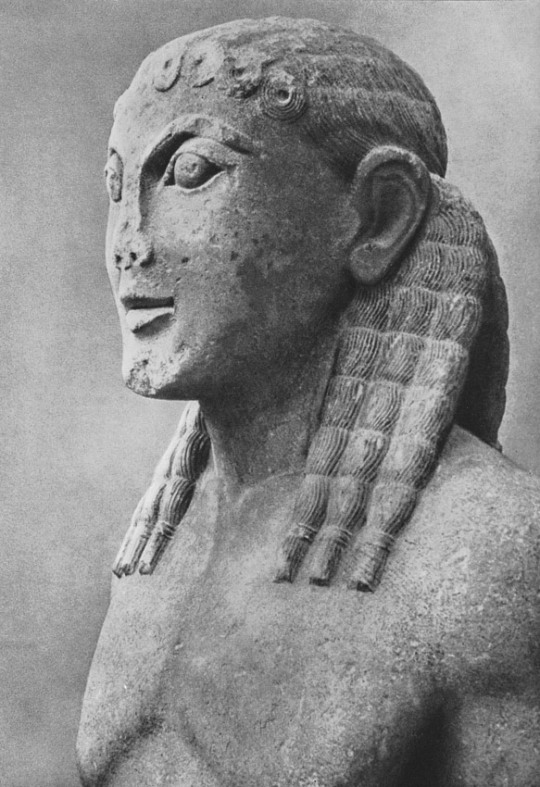#Polymedes of Argos
Explore tagged Tumblr posts
Photo

Polymedes of Argos
Statue of Kleobis (Biton). Detail. Marble. Ca. 600 BCE. Sculptor Polymides of Argos.
Credits: © 1963 Photo, text: Kolpinskij Ju. D. Skulptura Drevnej Ellady. Moskva, 1963. Ill. 3.
Believed to be Kleobis. Kleobis & Biton, 2 archaic Greek marble kouroi (pl. for kouros) from Argos at Delphi Archaeological Museum.
Their story dates back to about 580 BC. and is about maximum happiness, i.a.
It can first be seen in Herodotus Histories (1.31), where Solon tells King of Lydia, Croesus about the happiest persons in the world.
Inscriptions, though, on the base of the statues identify them as ϜΑΝΑΚΩΝ (wanakōn), i.e. the "princes", an attribute usually given to Castor and Pollux in Argos, a fact which supports identification with the Dioscuri. The inscription also identifies Polymedes of Argos as the sculptor. -Wiki
#Polymedes#Polymedes of Argos#sculpture#ancient#gr#kouros#Herodotus#story#history#portrait#head#iconic#happiness
100 notes
·
View notes
Photo

The statues are in what is regarded as a typical Peloponnesian style: massive and muscular. Their left foot is stepping forward, whereas their hands are bent at the elbows, touching the thighs, hands closed in fists. The hair are curly over the forefront and hang on the shoulders. Their eyes are large and almond-shaped, crowned by high eyebrows. Their faces bear the typical Archaic smile. They wore high-soled sandals. Each figure stood on a different stepping stone but they were both standing on the same pedestal.
Polymedes of Argos, c. 615-590 B.C.
4 notes
·
View notes